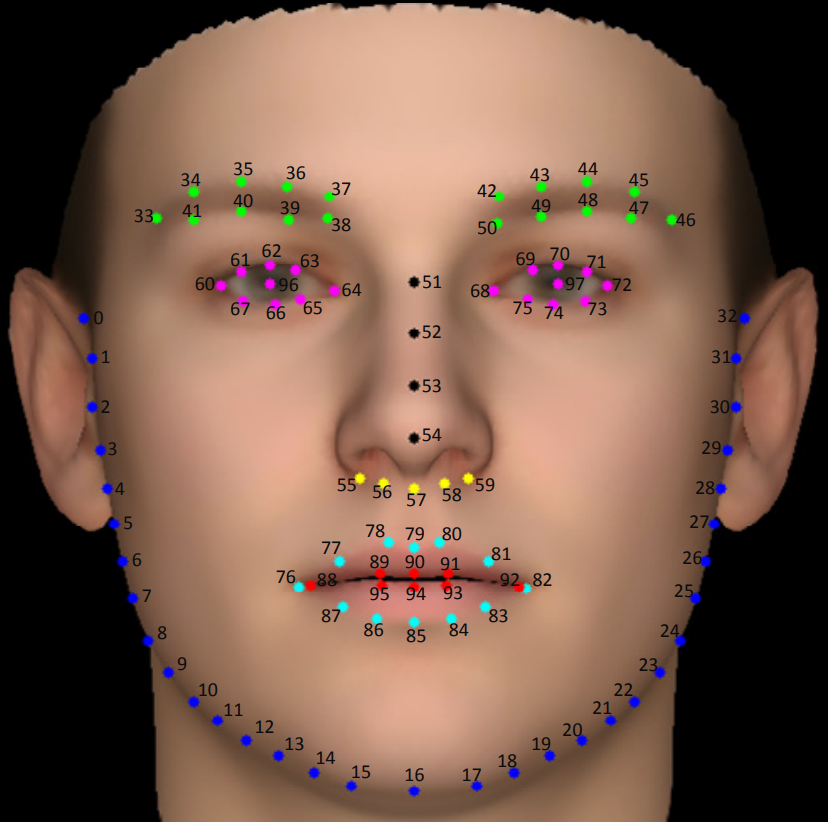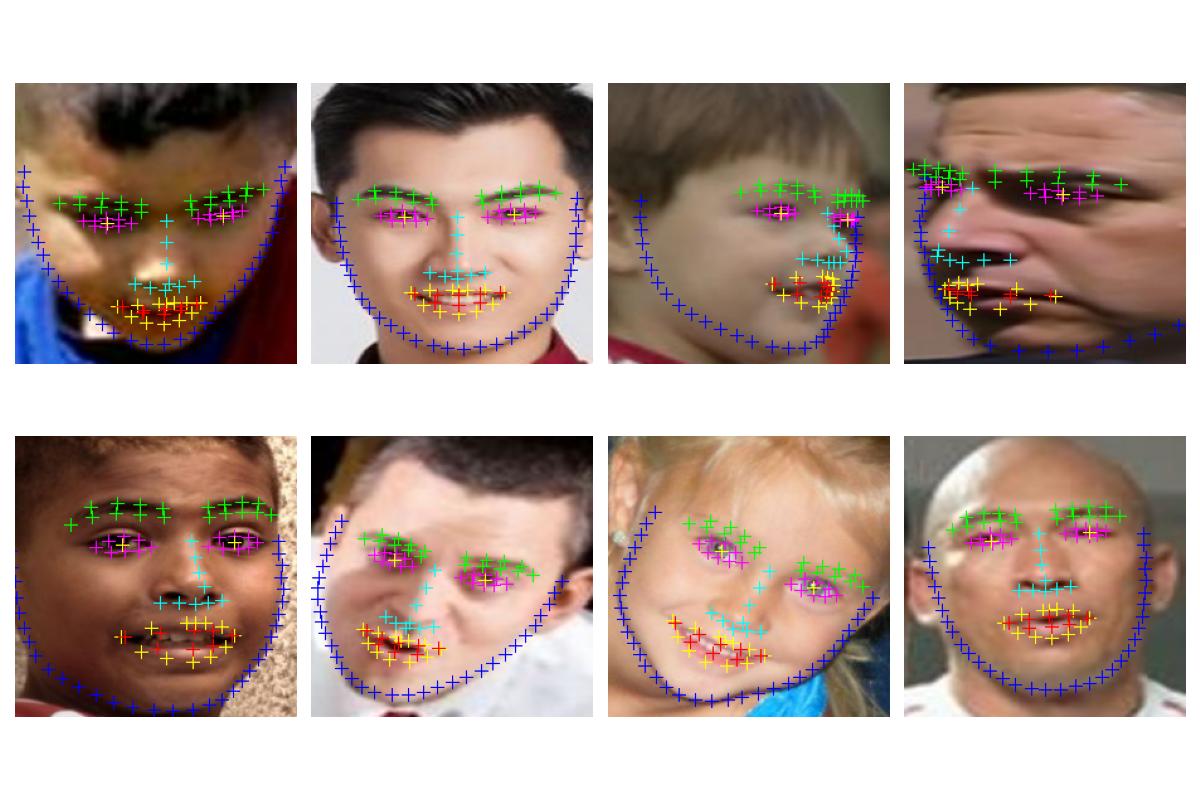Face landmarks estimation
Introduction
The goal of this side project is to create and train a model to estimate the location of 98 face landmarks. These landmarks can be used for head pose estimation, sentiment analysis, action recognition, face filtering and more.
Dataset
As dataset, I choose the Wider Facial Landmarks in-the-wild (WFLW)1 from Wayne Wu et al., containing a total of 10000 annotated faces (7500 for training and 2500 for testing). The following figure shows where the landmarks are located: 
Training Pipeline
For the first implementation of this model, I assumed that the input image will already be cropped around each face by another algorithm. Next models might take directly as input the full image without face pre-detection.
The dataset provides along each landmarks annotation list, the corresponding face bounding box. Hence, each training image is first cropped (while still keeping a padding mask around the box), converted into 32bit float, resized to 224x224, and lastly normalized with a mean equal to 0.5.
Models
Although heatmap-based methods seems to be more accurate in this type of tasks, I decided to start with a traditional convolutional architecture. Based on results and future developments, other approaches may be taken into consideration.
| model | test loss |
|---|---|
| ResNet50 | 10.1 |
First Version
The first version’s architecture is a standard CNN architecture using ResNet502 as backbone. So, the last ResNet layer has been changed to produce a 196 dimensional output tensor, i.e. (x,y) for each one of the 98 markers. Such model has been trained for 200 epochs using Wing loss3.
Model 1 outputs on some test set elements:

The following plot contains training loss (blue) and validation loss (red):
